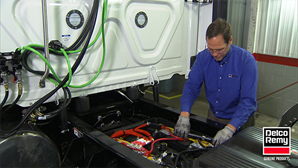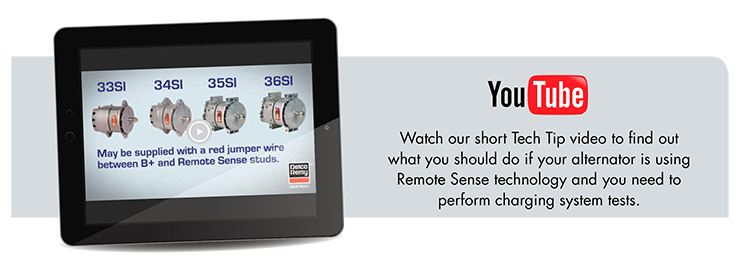
Our latest Tech Tip reviews how the use of Remote Sense can impact diagnosing voltage complaints.
Complaints can arise when heavy current demand conditions exist. Sometimes there are resistance losses in the power cables which, in turn, limit the regulated voltage available—sometimes by as much as a half-volt. This results in lower battery state-of-charge and less efficient operation.
The cable voltage loss can be overcome by using an alternator equipped with Remote Sense. Rather than regulating the voltage at the alternator B+ output stud, the Remote Sense input serves as the regulation point. The alternator Remote Sense wiring is typically terminated at the batteries or main electrical junction block through the use of a fuse. If the Remote Sense wiring is not connected, the regulator reverts to internal sense at the alternator B+ stud.
If your alternator is using Remote Sense technology, then you will need to keep these tips in mind when performing charging system tests:
- Remote Sense will elevate the system voltage to overcome the cable voltage drop and regulate at the point of termination.
- A voltage drop between an alternator and the point of termination should be less than half a volt. If excessive voltage drop is found in the system, inspect the electrical connections and cables at the starter, battery bank and alternator. Check for corrosion, wire chafing and proper torque on all terminals. Make any necessary repairs and recheck the voltage drop.
- The voltage drop between the Remote Sense input and the point of termination should be close to zero volts with the system operating. If excessive voltage drop is found in the system, check all the terminations, fuse and wiring for corrosion and proper torque.
